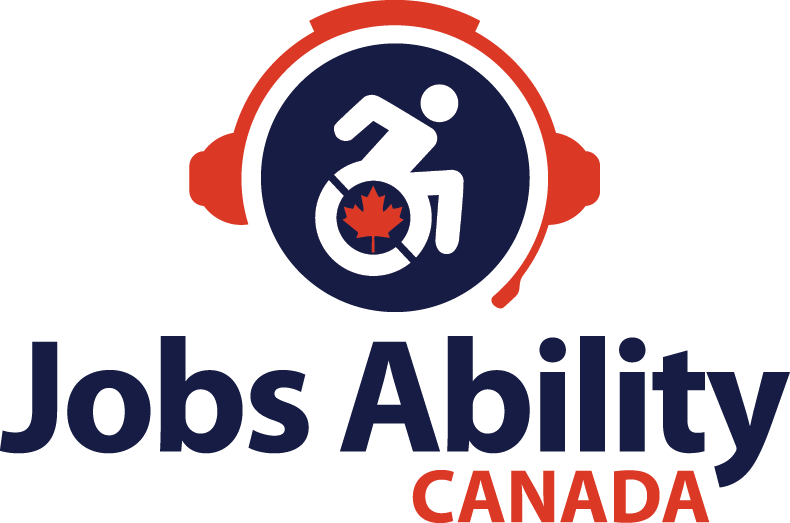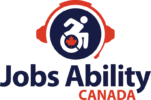
Disability-inclusive Hiring Crucial for Business Growth and Success Post-pandemic
June 18, 2021
How to Charge Up the Power of Inclusion
June 18, 2021What to Understand About the Power of Inclusive Hiring

The global coronavirus pandemic has rapidly changed the workplace; swiftly broken down some myths and misconceptions about disability that have lingered for decades; smashed some perceived barriers to employment for people who have a disability; and sparked more conversation about the business benefits of inclusive hiring.
Inclusive hiring drives success on many levels in businesses. That’s the power of inclusion. Whether we’re talking about a small business in a rural community, or a multinational company with offices around the world.
Some key ways inclusion empowers
- It changes employees’ lives and helps them be more productive and successful in the workplace. Sometimes attitudes, unconscious bias, and myths and misconceptions are the biggest barriers to success for businesses and employees alike. As the International Labour Organization (ILO), a United Nations agency, states in its employer guide to workplace inclusion of people who have a disability, The Competitive Advantage of Hiring Persons With Disabilities, “disability inclusion is a process” of making everyone successful through awareness and intentional actions. “In the workplace, it includes providing the necessary support and accommodations so that [people] can be fully productive, to the greatest extent possible. To succeed in disability inclusion, it is important to create a climate of inclusion, based on commitment, disability awareness, and policies and practices.”
- Research by Deloitte has shown that companies with inclusive cultures are eight times more likely to have better business outcomes. And these are closely tied to employee performance and productivity. Businesses can’t succeed if their employees don’t. And for all employees a key part of being productive and successful is satisfaction.
- Inclusive hiring leads to employee satisfaction and loyalty, when it’s done right. Recruiting and retaining employees who have a disability makes a business stronger. That’s because there’s less turnover, and fewer dollars and less time spent on the hiring process. Statistics show that staff retention rates are 72% higher among people who have a disability. Satisfied staff are dedicated employees, generally.
“There are many ways people with disabilities can be integrated into the workforce. . .it’s certainly something that can be achieved through employers willing to open themselves up to hiring a person with a disability and reaping the rewards of doing that,” says Joe Hoffer, controlling partner of Cohen, Highley, LLP, a law firm in London, ON. The firm has practised intentional inclusive recruiting for decades, and Hoffer is a long-time member of the Ontario Disability Employment Network’s Business Champions League.
He says, when people “open their minds” and expect success not only of themselves but also of the employees they hire, “It amazes me how often you achieve that outcome. And by success, I mean not just in terms of operational success within the workplace, but success for that individual in their life.”
- Inclusive hiring enables businesses to fill needed roles with skilled, qualified people who are the right “fit.” Industries in Canada and other countries are facing labour shortages and expect these to continue over the next 10 years.
In Canada, an October 2019 report by the Canadian Manufacturers & Exporters (CME) noted, 85% of manufacturers have a hard time filling vacancies.
And a 2018 study by the Business Development Bank of Canada found 39% of small-to-medium enterprises (SME), which drive the Canadian economy, are having difficulty finding new workers.
Meanwhile the Mining Industry Human Resources Council has said the Canadian mining sector needs 100,000 new workers over the next decade.
Labour shortages like this aren’t happening only in Canada.
A global Manpower survey showed that in the U.S., seven out of 10 companies reported labour shortages in 2019. That’s 70%. In 2009, it was 19%.
In the U.K., the British Chambers of Commerce says four out of five manufacturing firms has trouble finding workers. It surveyed 6,000 companies across the U.K.
The talent exists
But there is talent available. It’s there, to help business owners, hiring managers and recruiting professionals meet the labour shortage head on and shock-proof their businesses. It’s in the disability talent market.
While 968,000 people who have a disability in Canada are employed, over 400,000 aren’t, even though they’re ready, willing and able to. So there is a large pool of talent available.
For the most part, these jobseekers use their personal contacts and networks to find employment. They also enlist employment service professionals for assistance. The talent is there in the disability talent market — and businesses need to access the power of inclusion. Some are, but more need to. A joint survey by the National Organization on Disabilities (NOD), Harris Interactive and the Kessler Foundation found that only 40% of businesses accessed assistance from employment service organizations when recruiting new employees.
What else the power of inclusion does
- Inclusion increases productivity, employee engagement, and profitability. A 2018 Accenture study found, businesses practising inclusive hiring have 72% more employee productivity, a 45% increase in workplace safety, 28% higher revenue, 30% higher profit margins and two times more in net income than other companies surveyed in the study.As well, in its 2017 Global Human Capital Trends Report, Deloitte noted that “diverse and inclusive teams are more innovative, engaged, and creative in their work.” It compared high-performing teams to low-performing ones. Deloitte’s conclusion? Its findings “supports the view that people must feel included in order to speak up and fully contribute” to a business.
Deloitte research also found that businesses which are intentional about inclusive hiring are more innovative than other firms; six times more able to effectively anticipate change; and twice as likely to meet or exceed their financial targets.
- Inclusion adds to the economy, with positive benefits. Not only does inclusive hiring help businesses be more competitive within their sectors, it also plays a role in boosting the economy in general. The authors of a 2019 TD Economics report predict that with increased inclusive hiring in Canada, there would be a 1.4% (approximately C$36 billion) increase in GDP by 2030. They added that “maximization of human potential” through more inclusive hiring “is the ultimate benefit” of policies geared towards it.
They also note, businesses that don’t start intentionally recruiting people who have a disability will, in the next few years, find themselves lagging behind rather than being more competitive.
- The power of inclusion drives cultural change within an organization. In 2017, Deloitte developed a new, four-level model of D&I maturity for organizations. It moves businesses from a compliance-thinking approach to D&I, to a strategic approach, “to create a truly inclusive culture.” In other words, the CEO needs to own and drive diversity and inclusion (D&I), not the human resources department.“Diversity and inclusion has been a compliance function driven by human resources for too long,” says Josh Bersin, principal and founder of Bersin by Deloitte, Consulting LLP. “Our new diversity and inclusion maturity model show that the most effective way to achieve significant gains is through leadership ownership, strategic measurement, and a culture of accountability for inclusion that is driven from the top down.”
- Inclusion is a “winning” solution right at business’s fingertips, whichever way you look at it. All these statistics make this clear. The talent pool of skilled, qualified people who have a disability can help businesses expand their base of qualified employees, so they’re prepared for the future.
Yet, there’s what Deloitte calls “a reality gap.” In its 2017 Global Human Capital Trends Report, Deloitte found that across the board, there’s now more focus on D&I, however “many businesses may be in denial about the reality in their own companies.” Deloitte’s research found that 71% of businesses aspire to have an inclusive culture. But only 12% have reached D&I maturity in Deloitte’s new four-level model.
There’s still a lack of knowledge that’s impeding businesses from capitalizing on the power of inclusion. A survey of small-to-medium-size businesses in 2017 by the Canadian Council on Rehabilitation and Work found, 71% of businesses are not hiring people who have a disability because of a “lack of awareness in skill level.”
Moving from acknowledgement to action on D&I
Lingering myths and misconceptions about the skills and abilities of people who have a disability are still common. They can deter businesses from making their hiring policies and procedures more inclusive. But things are changing. As Deloitte notes, more companies are starting to focus on “eliminating measurable bias” from their talent acquisition processes.
Saying it’s important in your business is one thing. Learning about, understanding, and putting into practice the power of inclusion is another, entirely. In part two of this series, we’ll look at the keys for implementing D&I in your business — the right way, successfully — so you can harness the power of inclusive hiring.
This post was originally published as part of a National Disability Employment Awareness Month 2020 article series.



